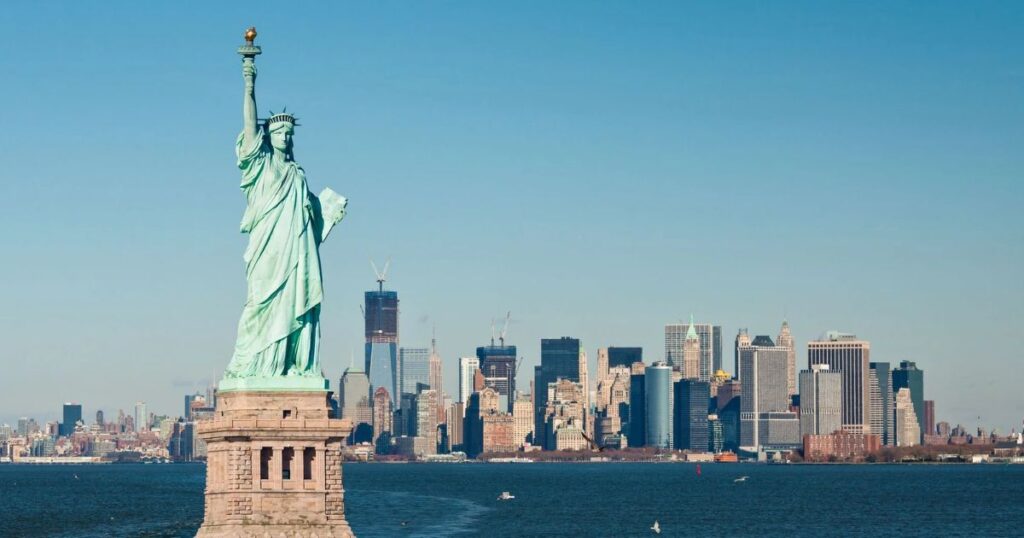Ever wondered what 80 feet really looks like in the real world? Whether you’re trying to visualize a building’s height or understand the scale of natural wonders, having familiar reference points helps put this measurement into perspective.
From iconic monuments to magnificent marine creatures, let’s explore everyday examples that bring this dimension to life. We’ll start with the basics and then dive into fascinating comparisons that make 80 feet more relatable.
What Does 80 Feet Look Like?
Visualizing 80 feet becomes easier when you break it down into familiar measurements. At 24.3 meters or 960 inches, this length equals about five standard cars parked bumper to bumper. For a human-scale comparison, imagine 13 adults of average height (6 feet) lying end to end.
Think about your local tennis court – at 78 feet long, it’s almost exactly 80 feet. This gives you a practical reference point you can visit and experience firsthand.
Is Surviving an 80-Foot Drop Possible?
The question of surviving an 80-foot fall often comes up when discussing building heights and safety measures. While falls from heights over 30 feet are typically life-threatening, survival stories exist under specific circumstances.
Landing surface and body position play crucial roles in survival chances. Water or deep snow can significantly improve survival odds, though serious injuries are still likely. Medical professionals emphasize that immediate emergency care is essential in these rare survival cases.
How Many Stories Tall is 80 Feet?
In urban architecture, 80 feet typically translates to an eight-story building. Standard floor heights in residential and commercial buildings average 10 feet, making this a reliable reference point for visualizing vertical distance.
Modern building codes and design standards maintain these consistent measurements across most cities, though some variations exist for special-purpose floors like lobbies or mechanical levels.
Things That Are 80 Feet Long
Before diving into specific examples, let’s understand why this measurement matters in our daily lives. From city planning to transportation design, the 80-foot dimension appears surprisingly often in our built environment and natural world.
Understanding these comparisons helps architects, engineers, and everyday people better grasp spatial relationships and make informed decisions about everything from home buying to appreciating natural wonders.
1. Half the Height of the Arc de Triomphe

Paris’s iconic Arc de Triomphe stands at a majestic 160 feet, making its half-height a perfect 80-foot reference. This historic monument showcases how classical architecture used precise measurements to create visually stunning proportions.
The arch’s design incorporates detailed sculptures and reliefs that can be appreciated from ground level, despite its impressive height. This architectural masterpiece demonstrates how 80 feet of vertical space can be both imposing and aesthetically pleasing.
2. The White House

America’s most famous residence approaches 80 feet at its highest points, making it another relatable reference point. The White House’s height was carefully planned to project authority while maintaining approachability.
This architectural balance reflects early American democratic ideals, avoiding the imposing heights of European palaces while maintaining dignity through classical proportions and design elements.
3. 1/4 Statue of Liberty

Looking up from Liberty Island, 80 feet takes you to roughly one-quarter of the Statue of Liberty’s total height. This segment reaches approximately to Lady Liberty’s waist, offering a tangible way to understand the monument’s scale.
The statue’s copper sheets and internal structure, designed by Gustave Eiffel’s team, showcase nineteenth-century engineering excellence. Understanding that 80 feet represents just a fraction of the statue’s total 305-foot height (including base) helps visitors appreciate its monumental scale.
4. Residential Building Heights

Modern urban residential buildings at 80 feet represent the sweet spot between efficient land use and comfortable living space. These eight-story structures have become increasingly popular in growing cities, offering the perfect balance of density and livability.
These buildings typically house a mix of apartments, shared amenities, and sometimes ground-floor retail spaces. Their height allows for optimal natural lighting while maintaining a human scale that doesn’t overwhelm neighboring structures.
The design of these buildings often incorporates features like rooftop gardens or community spaces, making the most of their vertical dimension while creating sustainable urban communities.
5. Two Buses

Standard city buses measure approximately 40 feet each, making two buses end-to-end a perfect 80-foot example. This comparison proves particularly useful in urban planning and transportation design.
These vehicles, essential to public transportation networks, demonstrate how 80 feet of length can be both practical and maneuverable in city environments. Their size accommodates passenger needs while remaining suitable for urban street navigation.
6. NASA Space Shuttle External Tank

The External Tank that powered NASA’s Space Shuttle measured almost exactly 80 feet in circumference. This massive fuel container played a crucial role in launching astronauts into orbit from 1981 to 2011.
Engineers designed this perfect cylinder to hold 143,000 gallons of liquid oxygen and 383,000 gallons of liquid hydrogen. The tank’s 80-foot circumference wasn’t arbitrary – it represented the largest diameter that could safely travel by rail from its manufacturing facility in Louisiana to Kennedy Space Center.
Understanding this 80-foot measurement helps grasp the immense scale of space exploration infrastructure. Each tank, though disposable, cost about $75 million and represented a marvel of precision engineering.
7. Ancient Redwood Root System Spread

While we often look up when measuring things, the root system of an ancient redwood tree spreads approximately 80 feet outward from the trunk. This invisible but crucial network supports these massive trees and connects entire forests.
These roots typically only reach about 6-12 feet deep, but their lateral spread creates an intricate web of support and nutrient exchange. Scientists studying these systems have discovered that an 80-foot radius allows optimal resource sharing between trees while maintaining structural stability.
The root network’s dimension showcases nature’s efficiency – providing enough spread to gather water and nutrients while allowing space for neighboring trees to thrive. This underground architecture has evolved over millions of years to create the perfect balance between stability and resource gathering.
8. A Tennis Court

A standard tennis court stretches 78 feet in length, making it an almost perfect reference for visualizing 80 feet. The court’s familiar rectangular shape and clear boundary lines provide an excellent real-world example that most people can relate to.
Beyond just its length, a tennis court’s proportions demonstrate thoughtful design principles. The width varies from 27 feet for singles matches to 36 feet for doubles play, creating an optimal space for the sport’s dynamics.
This standardized measurement has remained consistent across international competitions, making it a reliable reference point worldwide.
9. Blue Whale

Nature’s largest animal, the blue whale, often reaches lengths of 80 feet, though some specimens grow even larger. These magnificent marine mammals demonstrate how evolution optimized size for oceanic conditions.
Their immense scale, supported by water’s buoyancy, allows them to feed efficiently on tiny krill while maintaining remarkable agility for their size. Modern research vessels use the blue whale’s length as a reference point for marine biology studies.
10. Airbus A380

The Airbus A380’s height of 79 feet nearly matches our target measurement exactly. This modern marvel of aviation engineering demonstrates how precise dimensions play crucial roles in aircraft design.
The A380’s measurements reflect careful optimization for passenger capacity, fuel efficiency, and airport compatibility. Each dimension serves specific purposes in achieving safe and comfortable air travel.
11. 1/3 Giant Sequoias Tree

A mere third of a mature Giant Sequoia’s height equals about 80 feet, highlighting these trees’ awe-inspiring scale. These ancient giants demonstrate nature’s capacity for creating massive yet sustainable structures.
Their remarkable height results from centuries of growth under specific environmental conditions, making them living monuments to Earth’s natural history and ecological processes.
12. 1/5 Pyramid of Giza

The Great Pyramid’s original height of 481 feet makes 80 feet approximately one-fifth of its total height. This comparison helps visualize how ancient Egyptian engineers achieved such remarkable precision in construction.
Modern studies continue to reveal the mathematical and astronomical knowledge embedded in the pyramid’s dimensions, making this ancient wonder a testament to early human engineering capabilities.
Understanding Scale in Modern Context
The 80-foot measurement continues to influence modern design and construction. From wind turbine heights to solar panel installations, this dimension appears frequently in sustainable technology applications.
Urban planners and architects regularly work with this scale when designing mixed-use developments that balance human comfort with efficient land use. The measurement often represents an ideal height for mid-rise buildings in developing city centers.
Environmental and Educational Applications
Using 80-foot references helps environmental educators explain ecosystem scales and conservation needs. Whether discussing forest canopy layers or marine mammal habitats, this measurement provides valuable context.
The dimension also proves useful in citizen science projects, where volunteers help measure and monitor natural features. Understanding this scale improves public engagement with environmental protection efforts.
Read Also: 12 Things and Animals That Are 10 Feet Long
Conclusion
Ever wondered just how long 80 feet really is? It’s about the same as five cars lined up or a tennis court. More than just a number, this length shows up in some pretty amazing places.
Think of the blue whale swimming in the ocean, stretching as long as two city buses. Or look up at an 8-story apartment building – that’s 80 feet right there. Even the White House and parts of the mighty Statue of Liberty share this measurement.
From engineering marvels like the Airbus A380 to natural wonders like Giant Sequoias and ancient redwood roots, 80 feet pops up everywhere. Whether you’re designing buildings, studying nature, or just curious about the world around you, it’s a size worth knowing.
